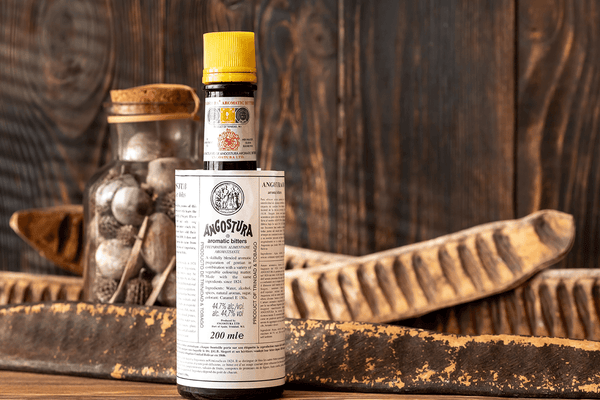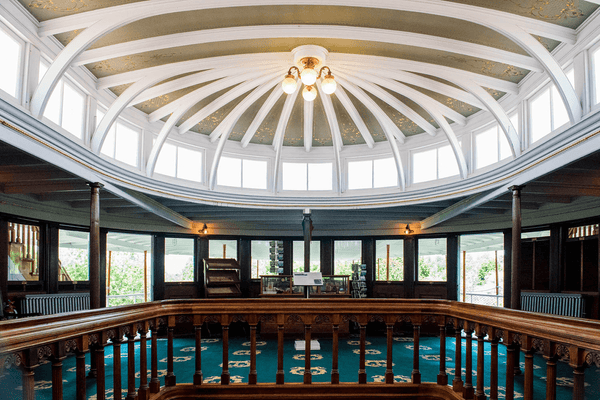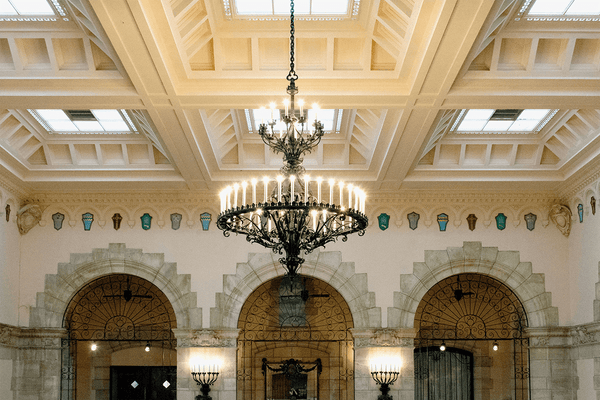SEEING THROUGH WALLS
Too often, the blank canvas is positioned as foreboding. It is at the same time an endless realm of opportunities and also a blank void...


Adele-Renault Gutter Paradise Maryland London - Photo by Marian Medic
Too often, the blank canvas is positioned as foreboding. It is at the same time an endless realm of opportunities and also a blank void. The methods by which creatives tackle their empty slate of choice are as varied as the artists themselves and their chosen medium. But what if that canvas is thirty feet tall? How does the creative process evolve in the face of literal walls? We brought this and other questions to three celebrated artists from around the world who regularly produce large-scale murals: Adele Renault, CP1, and Hiero Veiga.
First up, meet Belgian artist Adele Renault.
She is making a name for herself through incredible attention to detail not only in the production of her work but in the very subject matter. Highlighting the oft-overlooked beautiful moments in the mundane, she transforms everyday locations into opportunities for viewers to be captivated and reflect.
What led you to this art form?
Adele: The graffiti route. I never thought my studio/gallery practice and my earlier years of graffiti would lead me to become a muralist and live from it, but it is the natural evolution for many creatives like me. I think the constantly rising demand for murals just made it almost impossible to not jump on that train.I was always drawing and painting, but I didn’t think I could solely rely on selling paintings so when it was time to go to college I studied graphic design because I thought I needed a real job.But I only lasted two years sitting at a computer designing. My need to travel and to paint seemed to be easily answered by murals. And if you already mastered spray paint skills and aren’t afraid of painting large scale ... then my answer would be how could have I not become a muralist?You show immense attention to detail in your work, literally changing the scale on tiny aspects of organic life (birds, wings, and more).
Your Gutter Paradise series is almost hypnotic in color choice and flows with the feathers. All that to say, what led you there...to that subject matter and execution?
Adele: The Gutter Paradise series flowed from details becoming the main subject. I started doing a lot of pigeon portraits because they are abundant on every street of every city in the world. Painting on the street... why not paint its inhabitants? And they’re underdogs yet have these amazing iridescent feathers on their necks. So the whole series is variations on pigeon feathers (only a tiny portion of their neck not wing feathers). The neck feathers are almost like tiny hairs. I started that series in 2016, so after 4 to 5 years I started improvising and imagining color ways too. But most of the paintings are still based on actual existing colors that occur in nature. About the execution, I think what led me to so much detail and so much zooming in and precision and layering is my marathon mentality. I’ve always loved to work hard and go the extra mile. I like to go for it until I can’t. Then I hate myself for killing myself physically. But it does lead to great paintings. The result I get, there is no shortcut for it I guess. The softness you see is from the layering of paint. So many layers. And what pushes me to always start a new marathon, is knowing the satisfaction I get when I see the finished piece and I don't understand how I did it.
When facing a blank wall, what do you do to get ready?
Adele: I honestly try not to think about it too much before starting. I just try to trust my instinct.With a lot of walls you have to send a sketch or mock or idea for approval, often weeks or months before starting a project, so then obviously I think about it and wait for the idea to come rather than chase it. As soon as I have an idea I do a quick mock-up and then try not to think about it until the start day. It would only bring unnecessary stress. The best I can do is have a few days to recharge before starting because the walls are very intense physically. But then again sometimes it works well when I do 2 or 3 back to back.
The first few hours or first day often doesn’t go very smoothly. But once I’m in the zone I’m in the zone. I like listening to audiobooks while I paint. Then there’s often a point where I start hating the wall, and then when it’s almost finished I’m at peace again, and when it’s done I get that wow effect again... did I make that?
You can learn more about Adele and her insight into the macro world by following her on Instagram @adelerenault. She shares new work, process photos, and information on upcoming shows and events.

Adele Renault Stinging Nettle - Ankarsum Sweden
Industrialization swept across the globe in the 19th century, and international travel became a status symbol of the elite. Wealthy families embarked on first-class tours of Europe, placing pins in every portion of the world map. Suddenly, there was high demand for lavish accommodations that would live up to their exceedingly extravagant residences. Grand Hotels not only satiated their need for “the best”, but they also doubled as social clubs of sorts. Guest lists would be printed in newspapers, allowing for fellow elites to call upon friends and ensure they were mingling with the “who’s who” no matter where they stopped along the way.
Associating themselves with the rich and famous, Grand Hotels began leaving their mark on the history and culture of the very cities they represented. For instance, the Viennese staple Sacher Torte was first whisked up in the Hotel Sacher. The aperitif long associated with Italian drinking culture - the Negroni - was initially stirred & served at the Grand Hotel Baglioni. And famed American literary character, Eloise, made her mark living on the “tippy-top” of New York’s Plaza Hotel.
Embodying every sense of the word “grandeur,” these stately hotels are now a status of their own. And who knew they could surpass a 5-Star Rating? Well, technically they can’t, but newly self-proclaimed 6-, 7-, and even 8-star Hotels continue to one-up the high-level creature comforts of the movers and shakers of the world. With such a storied tradition, it's hard for the average visitor to not fall for the wide variety of epicurean experiences a Grand Hotel has to offer -- just don’t feel bad pocketing some extra bottles from the minibar before checkout.
Next up, we got to hear from Chilean artist, CP1 (Claudio Picasso).
Currently based in Miami, his journey into murals began like Adele's...with a can of spray paint.
Tell us about how you get started in murals.
CP1: I got into spray painting as a teenager, being introduced to it by my best friend. I drew constantly as a child, and graffiti art was this incredible, new discovery for me. I never dreamed of making it into a career, though. There was no path for that then. I just knew that art would be a big part of my life, in one way or another. After graduating from college, studying fine art and art history, I moved to the Wynwood area and it all really came together. The scene was exploding and I was in the right place at the right time. In some of your newer(?) work, you create a collision of past and present, combining ancient classic Greek and Roman art with modern design elements.

CP1: Permanent Vacation - Wynwood Miami
What led you to this pairing in your work?
CP1: It started with my preoccupation with gradients and subtle fades in my portraiture. For about a decade, I used a lot of vintage photography, back to the mid-1800s, as references for my work. The stoicism and the soft-focus were what I was most attracted to, but I also liked reimagining black and white images however I saw fit. Then it just dawned on me that to get the best results for the type of look I want, these subtle color transitions and gradients, marble would be better than skin. I started looking up photo archives and experimenting. It just made even more sense that I use Italian references, since my father's side of the family, the Picasso family, is from there. It served as an interesting bridge from the Classical and traditional to the contemporary. Paying homage, but trying to do my own thing with it.
When it's time to start a project and you're facing a blank wall, what do you do?
CP1: It has changed as I've grown older, but I still have a bad habit of wanting to attack a wall. Lately, it has become important for me to see the wall days or weeks ahead of time, to ensure I can make the piece work in the space provided. A lot of the work is figured out ahead of time, on my iPad. As for day one of painting, I have to remind myself to grab breakfast, water, and all the rest, because I just want to get started. I wake up hyper-focused on the process, already thinking about what the painting challenges may be and how to overcome them, so I constantly remind myself to prep and set up properly. The only thing I need to get started is music, but otherwise, I'm ready once I roll out of bed.
What piece are you most proud of?
CP1: While there isn't one that stands out above the others, some work better for different reasons. I am proud of big walls I knock out with time constraints or ones that are site-specific. This one, completed for Wynwood Mural Fest last December, is fairly simple and not incredibly detailed. It just works in the space so well and I achieved the look I was going for, making it seem almost effortless. Making good work that has less, where more elements are stripped away, is so tough to do.
You can learn more about CP1 and keep up with his latest work on his Instagram at @cpwon.

Finally, meet Hiero Veiga. He hails from the south shore of Massachusetts and also found his creative start through graffiti. I was able to catch him for a quick call as he took a break during the inaugural BLKOUT Walls Festival in Detroit, Michigan.
So first question, what led you to become a muralist?
Hiero: I'm not a muralist. I'm an artist that paints murals. I don't like the title muralist. I'm passionate about that explanation, right? Because I come from graffiti and I'm an artist that was a graffiti writer, that does graffiti, and I now paint walls. I've always painted on large surfaces, I’ve always painted trains and I can't consider train work mural work. Even though my work can be categorized as murals, I don't consider myself a muralist.

Hiero Viega: Wynwood Miami
Can you talk a bit about what led you to do hyper-realistic portraits on such a large scale? You’re able to capture so much emotion and life with your work. It’s incredible.
Hiero: Honestly, people dying. I grew up around a lot of people I would lose and because I was always the one willing to take on the opportunity to memorialize or commemorate or honor somebody, that kind of just became my responsibility. As I got older into my twenties, I started focusing on more characters and portraiture and I kind of stepped away from lettering and so it just kind of became like a natural thing.
I've always painted hyper-realistic or focused on realism, especially as a kid. I loved drawing from life and found it was always something I was interested in. As far as portraiture goes, capturing emotion, the thing that you can’t see that makes it right. Because anyone, anybody can learn to draw from life, right? But when it comes to drawing life or capturing life, there is something about the spirit of what is alive, whether it's plants, animals, or people. And that's just something in my last 5 to 7 years that I tried to understand. Like the essence of what life is, right? What makes the person them, aside from it looking like them, you know?
And I find that when I know the person it works best. But sometimes I'm able to do it based on information I received from other individuals. It's kind of like when you first meet somebody, they may look and feel a certain way. You get to know their personality and their characteristics take on a completely new light because you get to learn who they are, what those expressions mean, and what they feel like, you know, and that's what I try to focus on... what they feel like. So you kind of become less of an artist and more of like a documenter or a reporter.

Hiero Viega: Wynwood Miami
That factors in well to my next question. When you're facing that blank wall, what do you do to get ready? You spoke to that hyper-focus and that background research, hearing stories, getting to know the person. Would you consider that part of your initial process?
Hiero: Yes and no. When I'm facing a blank wall several questions come into play, right? Before I even see the wall, do I have to paint something specific or can I do whatever I want? If I can do whatever I want, currently in my life, it most likely isn't going to be a portrait anymore. Unless I have something specific to say about somebody that I know. I no longer want to paint portraits of people I don't know.
Sometimes it's worth exhausting yourself to help others, right? But I'm learning that you can't save everybody and you can't be everyone's savior. That's what last year has taught me. During Covid, I and another artist by the name detour303 ran a mural campaign called "Spray Their Name,” where we traveled the country and painted victims of police brutality to give the masses and the families an alternative healing space. It fucked me up. I no longer want to focus on death. I no longer want to carry that, at least for right now, right? For now, I have more internal work to do and that's what I'm focusing my work on.
The greatest piece of advice I've ever received that I take to heart is every piece does not have to be the Mona Lisa and it won't right? If you want to paint one canvas, buy five, blow through four and then paint the last one. Get it in, get it in and enjoy the process.
The best way to keep up with Hiero Veiga is Instagram at @hieroveiga. He uses the platform kind of like a journal, providing deeper insight into his work.






